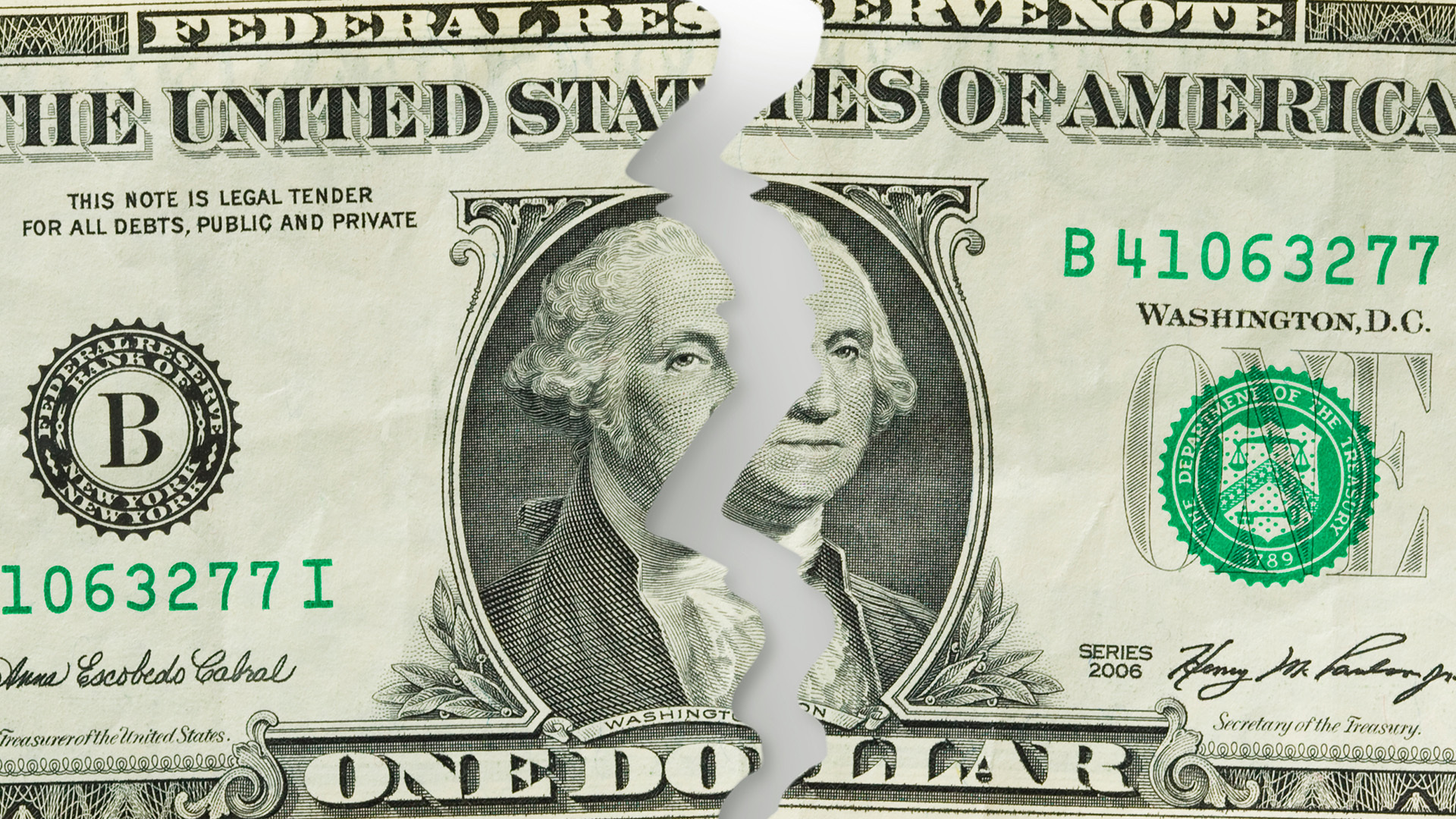
Simone Del Rosario: Americans’ confidence in the economy is wavering. After three consecutive months of growing consumer confidence, The Conference Board’s index took a hit in February.
Economists all over the map continue to point out that America’s economy is very strong right now. And they can’t quite put a finger on why many Americans don’t feel the same way. You’ve heard terms like “vibecession” and the “silent recession,” where people feel like they’re living in a downturn, even though the data points to an upswing.
While price hikes are slowing, this latest consumer confidence survey shows people are more worried right now about the job market and the political environment.
I want to move past the main economic indicators you hear about every month, like the inflation report coming out this week, and instead read the tea leaves with Danielle DiMartino Booth, former Federal Reserve adviser and CEO and Chief Strategist of QI Research.
Danielle, thanks for doing this with us.
Danielle DiMartino Booth: It’s great to be here today.
Simone Del Rosario: You obviously have such a an interesting look into the economy and you look at things differently than other people do. And there are three things I wanted to go through with you that maybe hint that things aren’t as good as they seem, I wanted to start first with what’s going on with the job market, I know that you’re tracking something called the warn notices.
Danielle DiMartino Booth: Yeah, we track these pretty carefully, we’ve been looking at annual averages, all the way back to kind of 2007 2008. And, and what we’re seeing is, you know, kind of watch what companies do, not what the government says that they’re doing. Because there seems to be such a big disparity in between the two that I think a lot of Americans have picked up on, the concerns about losing one’s job really have risen in the most recent consumer confidence data that we’ve seen. But when you track warn notices, these are warnings that companies provide to the state in which their employees are working. And they and that triggers a period of severance pay, depending on the state of 60 to 90 days. Of course, we know that a lot of companies provide much more severance than that. Google is one example. They paid out $2.1 billion in 2023. In severance costs, and and they announced that they were going to be paying out 700 million in the quarter ending March 30. So that’s that, that tells you that they’re going to be laying off more people in 2024. But again, big companies like that they’re giving their employees six, nine months of severance pay in many cases and 60% of what they were making prior to that, which is it’s a great cushion to have while you seek out other employment. But it also tends to put a damper on initial jobless claims that we follow very closely. It tends to amplify the non farm payrolls. Because Google’s telling the department that the Bureau of Labor Statistics that these people are still technically employed, because they’re paying them. So I try and again, follow what we’re seeing companies do, as opposed to what the government is telling us to get a better feel for the true state of the job market. A lot of people don’t like to be told that they’re imagining that the that the economy is slowing, they it actually tends to anger people.
Simone Del Rosario: What can you tell us about what you’re seeing in this data when it comes to layoff notices? Because that’s really interesting, you know, because we get these monthly jobs reports. But you’re saying this is this is different. So can you put into the historical context, the rate at which we’re seeing these notices?
Danielle DiMartino Booth: For the month of January, we saw a warn rate of around 24,000. Warn notices, not every company has to provide Warn notices. If you’re if you’re, if you’re letting go of a few enough employees at one time, you don’t necessarily have to file a more notice. In tracking layoffs for the entire month, we saw almost 104,000 layoffs reported that then that almost completely offset what ADP report was created for the month of January 107,000. So we are indeed seeing, seeing these layoffs at the highest levels that we’ve that we’ve seen since 2009, which was when the US economy was in a pretty deep recession. So they are recessionary reads, the Bureau of Labor Statistics has been very public and saying they’re plagued by very low response rates to their surveys, sometimes lower than 40% of companies are actually responding to these surveys such that they go back as they did in every single month of 2023 for 12 months in a row and have to revise downwards the data, when they do get the companies that this straggler companies in, if you will, even if it’s still, you know, 60% That didn’t respond the first time the survey was taken. So you really do have to follow what’s happening in real time these days in order to get a better feel for what’s happening in the job market, which right now we’re seeing at recessionary levels.
Simone Del Rosario: We keep hearing that consumer spending is really strong, you’re looking at some data that is showing some cracks in that.
Danielle DiMartino Booth: If you look on a company by company basis, and you follow kind of consumer packaged goods companies, you’re talking about that, that beer manufacturers, Heinz for example. And if you Follow up companies are telling you as well vendors, the Walmarts of the world compared to the Home Depot’s of the world, what we’re seeing is, is declining volumes of consumer packaged goods for the past two years for the full year of 2022. And the full year of 2023. quite extraordinary again, a recessionary read there. And when you see good news out of Walmart, listen closely to what management saying. They’re saying our same store sales have have grown by 4% year over year. But just notice the detail. That’s one half of what they were growing at a year ago, which was 8% 8.3%. So that’s been cut in half. And also hear what Walmart is saying about we’re seeing a lot of new customers trading down to us. And that means that the overall consumption pie is actually shrinking, because then you hear from Lowe’s corporation that their same store sales were down 6% year over year, Home Depot, their sales were down 4% year over year. And so what we’re learning is that, that Walmart is cannibalizing, if you will, the sales of other retailers as US consumers, there was a fascinating new payments survey out that showed 30% of affluent Americans are living paycheck to paycheck, that’s, you know, that’s a whole separate slice that you wouldn’t really think. But then, you know, affluent, a lot of a lot of affluent income earners, they don’t qualify for student loan forgiveness, and they’ve got great big mortgage payments and car payments that they have to make that maybe they didn’t have, prior to the pandemic. And just to put that into context, about 63% of Americans in total live paycheck to paycheck. So there’s there’s heightened sensitivity, when it comes to to budgeting and what you’re going to spend your paycheck on.
Simone Del Rosario: We’re talking about cracks in the economy, right? But give me some good news is there some sort of economic indicator that you’re looking at, and you’re like, you know, what this is, this is good. This is this is a sign of some strength in our economy.
Danielle DiMartino Booth: So you know, we’re, we’re well past Christmas here. I always try and watch, It’s a Wonderful Life. And there’s always that feel good aspect, about communities coming together. The founder of daily job cuts.com approached me a few weeks ago and said, I’m seeing something extraordinary in the economy, I’m seeing communities come together to save their small businesses. So that so that they’re able to keep whether it’s a mom and pop restaurant, or a shop that’s on Main Street, that may be at threat of being put out of business by the Amazons of the world, that communities are actually coming together and saving their small businesses, nothing can warm the heart more than hearing things like that, that we want to keep the fabric of our small towns together. And so I hope to hear more of these stories going forward. So that we don’t just become some great big country where everything’s delivered to our front doors, where you can have that good feeling of going into into into a store in a small town and, and hearing the the bell when you open the door. Those are those are the things that kind of, they whisper rainbows and butterflies,
Simone Del Rosario: It’s in small towns and big cities to this just reminded me of a little dog cafe that is, you know, trying to be saved through the help of its community through a GoFundMe page. And I just thought of that it’s in New York City. Just thought of that because you brought that up. So thank you for bringing that to our attention. Danielle DiMartino booth CEO and chief strategist and Qi research Thank you.
Danielle DiMartino Booth: Thank you







